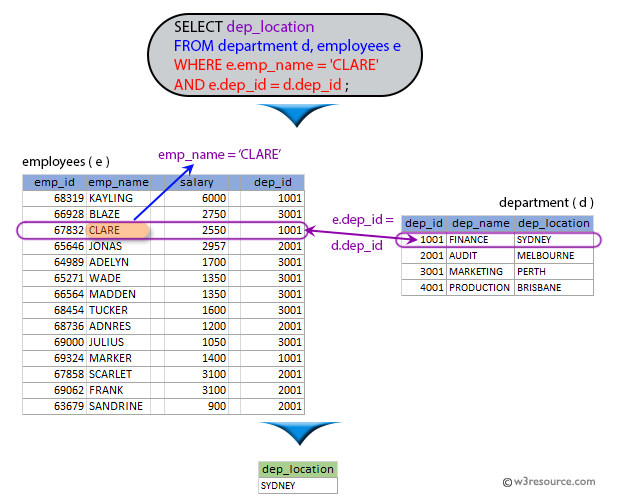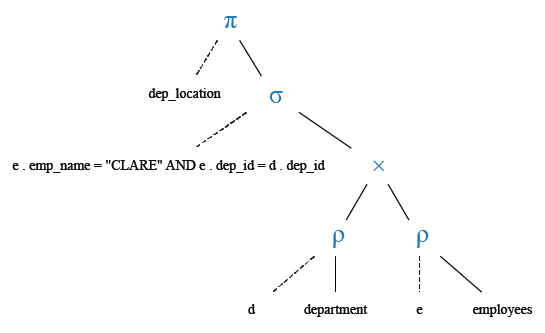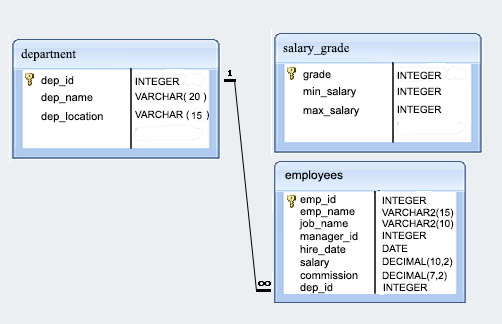SQL Exercise: Display the location of CLARE
[An editor is available at the bottom of the page to write and execute the scripts.]
71. From the following table, write a SQL query to find the department location of employee ‘CLARE’. Return department location.
Pictorial Presentation:

Sample table: employees
Sample table: department
Sample Solution:
SELECT dep_location
FROM department d,
employees e
WHERE e.emp_name = 'CLARE'
AND e.dep_id = d.dep_id ;
Sample Output:
dep_location -------------- SYDNEY (1 row)
Explanation:
The provided query in SQL that retrieves the department location of the employee named 'CLARE' by joining the 'department' and 'employees' tables based on the "dep_id" column.
The query returns a single column "dep_location" from the 'department' table where the "dep_id" column matches the "dep_id" column in the 'employees' table for the employee named 'CLARE'.
Relational Algebra Expression:

Relational Algebra Tree:

Go to:
PREV : Employees who are CLERK, ANALYST in descending order.
NEXT : Employees joining on given days, ascending in seniority.
Practice Online
Sample Database: employee

Have another way to solve this solution? Contribute your code (and comments) through Disqus.
What is the difficulty level of this exercise?
Test your Programming skills with w3resource's quiz.
